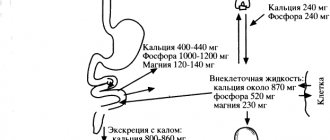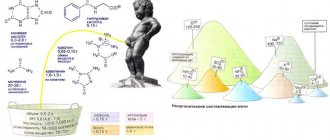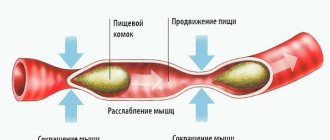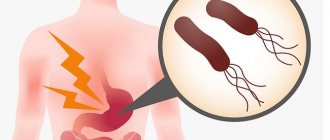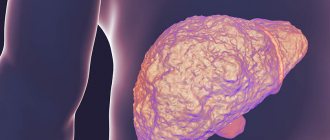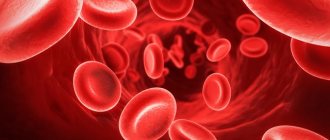6891
In all cases of liver damage, there is a change in the color of the urine. The organ in which urine formation occurs is the kidneys. Thanks to their uninterrupted operation, valuable substances undergo separation after they enter the body along with food. This article explains how the color of urine changes with hepatitis.
About hepatitis
This is an inflammatory process that develops in the tissues and cells of the liver. Depending on what caused it, hepatitis can be infectious (with the participation of viruses) and non-infectious (without causative viruses). As the name implies, viral hepatitis develops under the influence of viruses (A, B, C, D, E, G). For hepatitis A and E, the typical route of transmission is enteral, that is, through hands, contaminated water and food, etc. Other types of the disease can be infected through contact with the blood of a sick person, for example:
- injection drug use;
- unsafe injection practices;
- unsafe medical practices;
- transfusion of contaminated (untested) donor blood or its components;
- sexual relations in which there is contact with blood.
Important! The course of hepatitis can be either acute or chronic. It is the chronicity of the process that is considered the most dangerous variant of the disease.
Non-infectious hepatitis can be toxic and autoimmune. The first option develops as a result of the accumulation of a large number of toxins in the tissues and cells of the gland. Toxic substances can be formed both inside the body itself and come from outside. Their accumulation leads to inflammatory processes and death of hepatocytes.
The occurrence of autoimmune hepatitis is associated with changes in the functioning of the immune system. That is, the human immune system begins to recognize liver cells as foreign, thus attacking and destroying them. Symptoms of the disease may be absent for a long time, and laboratory research methods make it possible to recognize hepatitis at this stage.
Urine formation
Blood absorbs useful substances and transports them throughout the body into tissues and structures. This is necessary so that they are nourished and function properly, as well as for the process of formation of new cells.
Those substances that turn out to be superfluous (water, salt, bile) become the main components of urine and safely leave the body.
It is on how correctly the internal mechanisms work that indicators such as the color of urine, its smell, as well as the consistency and volume released depend.
Change in urine color is the first sign of liver problems. The presence of a disease can be eloquently indicated by an unusual color, loss of transparency, a sharp and rather unpleasant odor and foam that suddenly appears.
Factors affecting color change
Laboratory diagnosis of hepatitis
In a healthy person, urine is usually straw-colored, which is considered the “gold standard.” However, it can change its color under the influence of a number of factors, which is also considered normal:
- the more liquid you drink, the less saturated the color will be (to transparent) and, conversely, with little water consumption, the urine will become darker (dark yellow);
- in the morning after waking up, the color is more saturated because the urine is concentrated;
- the older the person, the more saturated the shade; for children, the lighter;
- taking certain medications and eating a number of foods provoke color changes (for example, beet, carrots, blueberries, etc.).
Reasons for color change
Urine indicators largely depend on the functioning of all organs and systems, including the biliary system. This is due to the fact that the normal production of fluid in the body is closely related to the work of tissues and cells that absorb and distribute this fluid throughout the body. Thus, disruption of the functioning of the gallbladder may indicate the production of pathological agents that enter the kidneys with the blood , and due to the fact that the human body rejects these pathological agents, they come out along with the urine, thereby modifying its consistency and composition.
Reasons for changes in shade during hepatitis
Since hepatocytes (liver cells) are damaged during hepatitis, their function to capture free bilirubin in the blood and bind it with glucuronic acid is disrupted in order to form non-toxic (safe, direct) bilirubin and release it into the bile capillaries.
Because of this, there is a sharp increase in the level of bilirubin in the blood, but the amount of not only free, but also non-toxic bilirubin increases. This occurs as a result of the penetration of the last of the bile capillaries back into the blood vessels, as degenerative processes occur in the liver cells.
With hepatitis, small, rapidly disappearing bubbles may be observed on the surface of the urine
The described processes lead to the patient's skin and sclera turning yellow (jaundice). Changes in shade are also observed in urine and feces. Urine with hepatitis becomes dark - the color of beer, tea leaves. This occurs as a result of the appearance of bound bilirubin and urobilin bodies in it. The level of stercobilin in feces decreases, which provokes its discoloration. Urine and feces may change color in parallel with the development of jaundice or just before its occurrence.
Important! It is worth noting that not all forms of hepatitis lead to a sharp change in the color of urine, but only those that are accompanied by jaundice and have an acute course.
Urine color in liver diseases
If a person is completely healthy, there is a change in the color of urine at different times of the day. In the morning it is concentrated, so it becomes dark. During the day it should be light if you constantly drink enough water.
If the liver tissue is damaged, the color of urine does not change immediately. To do this, it is necessary that the pathological process transfers to the process of bile secretion. Pigments begin to color the liquid excessively, so it may be slightly brown, beer-colored, brown, or red.
In addition to coloring, the composition of urine changes during hepatitis. Stable foam may appear in it, density may increase, and sediment may appear. Many of these indicators are visible to the naked eye, so any laboratory technician will tell you about pathologies of the urinary tract or organ parenchyma.
Urine color for various types of disease
The color of urine during hepatitis may differ slightly, which is associated with the form of the inflammatory process of the liver. You can see in more detail what changes are observed in the table below.
| Disease | Urine color | Comments |
| Hepatitis A, D, E | Color of strong brew or beer | Occurs in an acute form, significant destructive processes on the part of hepatocytes are observed, and are accompanied by the development of jaundice |
| Hepatitis B | Dark shade with the appearance of foam on the surface or no change | The anicteric form is not accompanied by a change in urine color |
| Hepatitis C | Most often no changes, rarely darkening | As a rule, hepatocytes are destroyed slowly, often occurring in a chronic form |
| Autoimmune hepatitis | Darkening of urine | Aggressive forms, usually accompanied by jaundice, hyperbilirubinemia |
| Toxic hepatitis |
The color of urine depending on the type of liver inflammation
Based on the color of the excretory fluid, the doctor can suggest a diagnosis. But it can only be confirmed on the basis of laboratory and instrumental tests.
The following types of inflammation are possible:
- Hepatitis A, E, D. These are diseases of a viral nature that provoke inflammation of the parenchyma. There is a violation of bilirubin metabolism. Therefore, urine becomes dark brown (the color of beer, strongly brewed tea). On the contrary, bilirubin is completely eliminated from stool, so it becomes discolored.
- Hepatitis B. A viral disease that affects the color of urine only if the skin is yellow. Urine with hepatitis acquires abundant foam, which does not disappear for a long time. It turns brown. If the patient does not develop jaundice, there will be no change in shade.
- Hepatitis C. This form of pathology affects the color of urine only during the period of connective tissue degeneration of the parenchyma. The disease lasts for many years, deformation and damage to the liver tissue occurs very slowly. Therefore, there is no disruption of bilirubin metabolism for a long time. It is in this regard that the patient and the doctor cannot always assume a diagnosis due to the lack of changes in the excretory fluid. However, when the disease becomes acute, the color of the urine becomes brown.
- Stones in the liver, kidneys, gall bladder. Urine will take on a reddish or scarlet hue as bleeding occurs.
When the doctor has identified an inflammatory process, urine tests are performed for hepatitis. They determine the physical properties and cellular composition. It can be used to judge the effectiveness of therapy.
What is observed in a urine test?
An experienced specialist can determine the presence of liver inflammation in a patient only by changes in the color of urine and stool, however, laboratory confirmation is mandatory. Typically, the patient experiences the following changes in a general urinalysis:
- the appearance of bilirubin (absent in a healthy person);
- urobilinogenuria – increased number of urobilinogen bodies. Normally, only traces of urobilinogen are observed in fresh urine;
- proteinuria – protein in the urine, which should normally be absent or allowed up to 0.033 g/l;
- microhematuria – the appearance of red blood cells (normally, a few in the field of view).
Bilirubin appears in the urine as a result of its large amount in the blood; the body tries to remove it, reducing it to normal, through the kidney apparatus. Healthy people also have urobilinogen bodies, since they are excreted in feces and urine. But with liver inflammation, the level increases sharply. The development of microhematuria does not lead to urine turning red (in this case we are talking about macrohematuria), but only confirms the presence of red blood cells in a laboratory way.
Tips for collecting urine for analysis
Tip #1
You cannot collect urine for diagnosis in the evening, since a number of enzymatic processes occur in stagnant urine that disrupt the true indicators. A morning portion is required, which must be delivered to the laboratory within 1-2 hours, no later.
Tip #2
Before collecting biomaterial, it is recommended to thoroughly clean the genitals. It is better not to carry out analysis for women during menstruation, but if urgently necessary, experts recommend using a tampon to prevent vaginal contents from getting into the container.
Tip #3
The volume of urine collected should be sufficient for diagnosis. On average it is 100-150 ml. You can purchase special containers at any pharmacy.
How to properly collect urine for hepatitis
There are cases when a patient has collected biological fluid incorrectly and is therefore misdiagnosed. To obtain reliable data, you must adhere to the following rules:
- The patient needs to collect urine only after waking up in the morning;
- You should first thoroughly wash your genitals;
- if a woman takes a urine test for hepatitis, she needs to cover the vaginal opening with a tampon so that microorganisms from it do not pass into the sample;
- urine is collected only in specially designed containers;
- A urine test for hepatitis is carried out immediately after collection (you can keep the liquid on the refrigerator door for 5-6 hours if it is not possible to send it immediately).
The patient should carefully prepare for a urine test for hepatitis. The following rules must be adhered to:
- for 3-4 days before the test, do not eat foods that could color the urine;
- within a week, you should not take new medications that the attending physician has not been warned about;
- you should adhere to the daily drinking regime that is familiar to the patient.
Proper preparation and collection of urine are the basic rules for obtaining reliable information so that the doctor can make a diagnosis.
Answers to frequently asked questions
What other laboratory methods, in addition to urine analysis, will help confirm or refute the presence of hepatitis?
The following tests are used to diagnose liver inflammation:
- general blood analysis;
- scatology;
- liver tests (transaminase levels, SDH, LDH, alkaline phosphatase, thymol test, etc.);
- blood biochemistry (glucose, bilirubin, albumin, globulins, fibrinogen, prothrombin);
- markers of viral hepatitis;
- PCR (determines the type of pathogen).
Do stool and urine necessarily change color if a patient has hepatitis?
Statistics show that only a third of patients observe changes in urine and feces. This usually occurs in cases of severe and acute forms of the disease. In a chronic course, the patient’s body adapts to the disturbances and manages to remove bilirubin without accumulating it in the blood in large quantities.
With hepatitis, the level of bilirubin increases in both the blood and urine. Does high bilirubin always indicate liver inflammation?
Elevated bilirubin levels do not always indicate liver damage. Such changes can be provoked by other reasons, for example, intoxication, infections, autoimmune pathologies, hemorrhages, blood transfusions, etc.
Description of symptoms
In this section, we will look at the main symptoms that may appear in patients with hepatitis C. If you identify at least one of them, consult a doctor for advice. Moreover, the problem may not be hepatitis, but a completely different disease.
At the end of the description of each symptom, we will provide ailments in which they can also occur.
Jaundice
In different literature, jaundice is sometimes called a disease or a symptom. In our case, it is a sign of liver damage. An external sign of jaundice is the appearance of a yellow tint to the skin and whites of the eyes.
What is this connected with? Our body contains a yellow pigment called bilirubin. It is a breakdown product of hemoglobin. If a person is healthy, the pigment is excreted through the digestive tract along with feces.
If the liver is damaged, there is liver failure, or there is obstruction of the biliary tract, bilirubin accumulates. An increased amount of it is collected in the blood.
To eliminate excess amounts, the body tries to remove it through the kidneys and skin. It is because of this that human skin gradually acquires a yellow color. This symptom can occur with all types of hepatitis, as well as in the presence of the following ailments:
- benign or malignant formations in the liver (cancer);
- hereditary disorders in the structure of the biliary tract;
- almost all types of pathologies of the gallbladder and liver (for example, cirrhosis of the liver, cholelithiasis, etc.;
- use of certain medications (may occur as a side effect from taking certain medications);
- postoperative complications;
Jaundice can also occur with syphilis, Hodgkin's disease, hemolytic anemia and other blood diseases, and the presence of various infections in the body.
Lack of appetite, nausea, vomiting
With hepatitis C, the patient may suddenly stop liking any of his dishes, and the desire to eat the same portions of food that were consumed before infection disappears. The appearance of nausea is not clear from where and does not add to the desire to eat well.
Such symptoms are quite relative in the sense that they can appear with other diseases and it is very difficult to diagnose the presence of hepatitis C from them. For example, other reasons for the appearance of such symptoms may be:
- intoxication of the body;
- endocrine disorders;
- neuroses, depression;
- presence of oncology;
- anorexia;
- typhoid fever and many other diseases.
Fatigue
It is important to correctly understand what kind of fatigue we are talking about. A person can simply overexert themselves during the week at work, fatigue will accumulate over 5 days and there will be no desire to do anything on the weekend - this is quite normal and there is no reason to worry.
In our case, the manifestation of fatigue is expressed in everyday things, that is, a person does the same things that he did before infection, but for some reason he has less and less strength to do them. And this does not necessarily have to be associated with doing physical work; mental work can also become more and more difficult.
At the same time, the person feels that he does not have time to recover; due to the feeling of fatigue, the desire to do anything actively disappears.
In addition to hepatitis C, fatigue can occur with the following diseases:
- depression;
- polymyositis;
- renal failure;
- cold;
- cancer of the liver or other organs;
- diabetes;
- cirrhosis of the liver;
- endocarditis and other types of ailments.
Hyperthermia
An increase in body temperature manifests itself in the acute stages of the development of hepatitis C. Often patients, without fully understanding it, consider this to be the cause of some other disease, for example, a common cold, and do not pay special attention to such a symptom.
With hepatitis C, the temperature generally fluctuates between 37.1-38 degrees
.
Sometimes it can rise to 38.5 °C
. However, it is also not worth focusing only on body temperature readings, because it can be in the subfebrile range and in other pathologies:
- weak inflammatory process inside the body;
- cold;
- focal pneumonia;
- tuberculosis;
- pyelonephritis;
- Whipple's disease;
- herpes;
- typhus
- psoriasis and a host of other diseases.
Pain in the abdomen and right hypochondrium
It is worth noting that such a symptom does not always indicate the presence of diseases. It can also occur during or after severe physical exertion on the body.
With hepatitis, this pain can be nagging and quite severe.
The symptom may also occur if:
- biliary dyskinesia;
- inflammation of the small intestine;
- diseases of the pancreas;
- cholecystitis and other diseases.
Unpleasant sensations in the joints
Most often occurs in the early stages of hepatitis development simultaneously with an increase in body temperature. This symptom can be a harbinger of not only hepatitis, but also arthritis, osteoarthritis, gout and other ailments.
Darkening of urine and discoloration of stool
With hepatitis C, urine may take on the so-called beer color. Therefore, if the color of your urine changes and becomes brown, you can immediately consult a doctor. Moreover, such a symptom may also indicate the presence of bladder cancer, vasculitis, the presence of kidney stones and other health problems.
Pale stool is a clear symptom of viral hepatitis, indicating the presence of liver damage. To accurately identify the pathogen in it, laboratory tests of its sample are carried out. It may also appear with liver failure, taking certain types of medications, liver or pancreatic cancer, bile duct atresia and other ailments.

